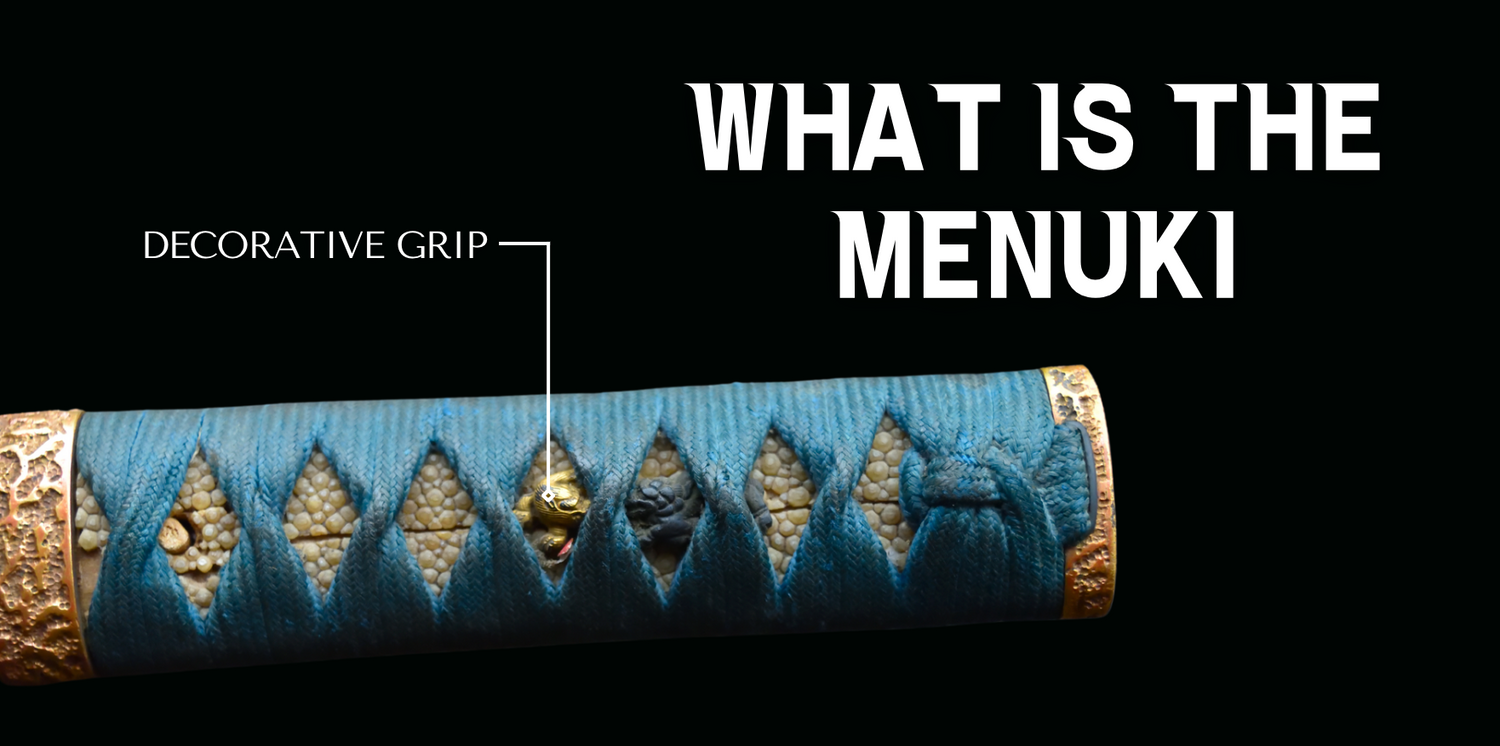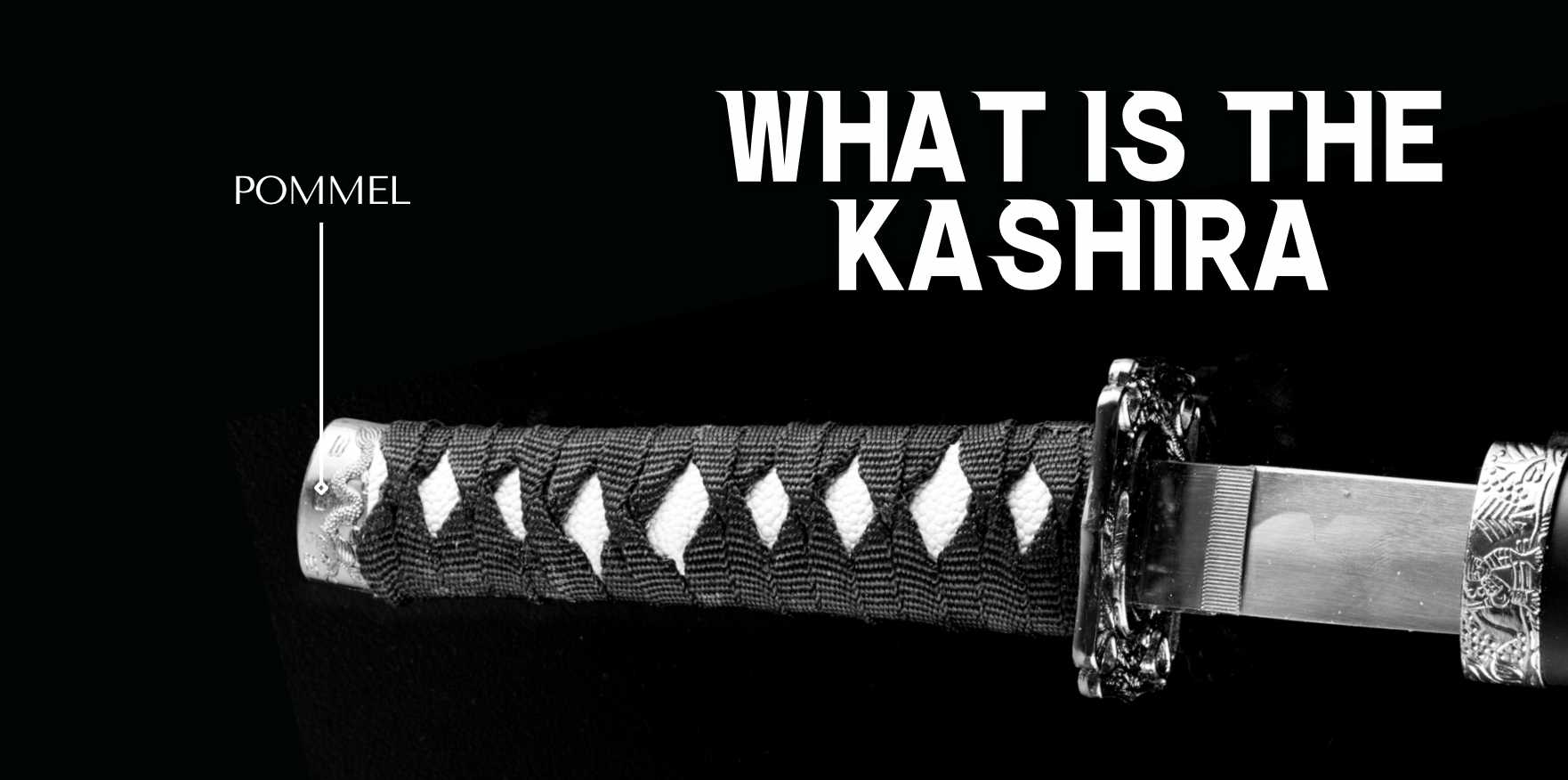The Origin of Menuki
The genesis of the Menuki lies deep within the ancient Japanese art of sword-making. Traditionally, these embellishments served to augment the aesthetic charm of the sword, offering a canvas for the artisan's inventiveness and a means for the sword bearer to display their individuality and standing.
The expression "Menuki" is derived from the Japanese verb "menu", translating to "to fasten". Yet, the significance of these ornaments transcends their straightforward name, hinting at a deeper purpose and influence. Originally, Menuki were not just decorative elements, they also provided a comfortable and secure grip by creating natural resting places for the fingers while wielding the sword.
What is a menuki on a katana

Menuki is a small ornament, used to embellish the handles of Japanese swords. These adornments are commonly crafted from metal, though they may also be fashioned from other substances like wood or ivory.
Menuki can be simple or ornate, and they are often made in pairs. The design of the menuki was often based on animals or other elements of nature. One common type of menuki features a dragon design, which is said to represent strength and power.
Material and Craftsmanship of Menuki
Menuki can be fashioned from an array of materials that range from precious metals such as gold and silver, to alloys like shakudo (a blend of copper and gold) and shibuichi (a mix of silver and copper). More distinctive materials like wood or ivory can also be employed. Each chosen substance brings its distinctive aesthetic allure, shaping the complete visual and tactile experience of the Katana.
Creating Menuki is an art in itself. Every piece is meticulously handcrafted, reflecting the traditions, skills, and patience of the craftsman. The designs often embody natural elements, mythological creatures, or themes from Japanese folklore, each one narrating a unique story.
What does menuki symbolize
The meaning of menuki varies depending on the design, but they often symbolize strength, power, and courage. Some menuki also have more specific meanings, such as those that depict animals like tigers or dragons. These designs represent wisdom and protection, respectively. Each theme is intricately intertwined with the philosophical and aesthetic dimensions of Japanese culture. Ultimately, whatever design is chosen for a menuki is up to the individual, and can be a reflection of their own personal values and beliefs.
Here are some menuki designs

Do all swords have a menuki
Not all swords have a menuki, but most do. Many menuki are very intricate and detailed, and can be quite beautiful. While they are not required for the sword to work, they are an integral feature of its traditional aesthetic.
How to remove menuki
To remove a menuki, follow these steps:
1. First, find a small, sharp object like a needle or a toothpick.
2. Gently insert the point of the object underneath one edge of the menuki.
3. Slowly and carefully pry the menuki up from the katana handle it is attached to.
4. Once the menuki is detached, you can remove it completely.
5. To reattach the menuki, simply reverse the process. First, insert the menuki into its setting, then gently press down until it is flush with the surface.
With these simple steps, you can easily remove and reattach your menuki as needed!
If you want to learn more about katana parts, check our blog post on the katana kashira, the round pommel of the sword, and master the katana anatomy!
To sum-up:
- Menuki are ornamental fittings on the handles of Japanese swords that enhance both the aesthetics and functionality of the weapon.
- Though traditionally made of metals or wood.
- Each Menuki design narrates a unique story, making these pieces an intriguing collection for antique collectors and martial arts enthusiasts.



